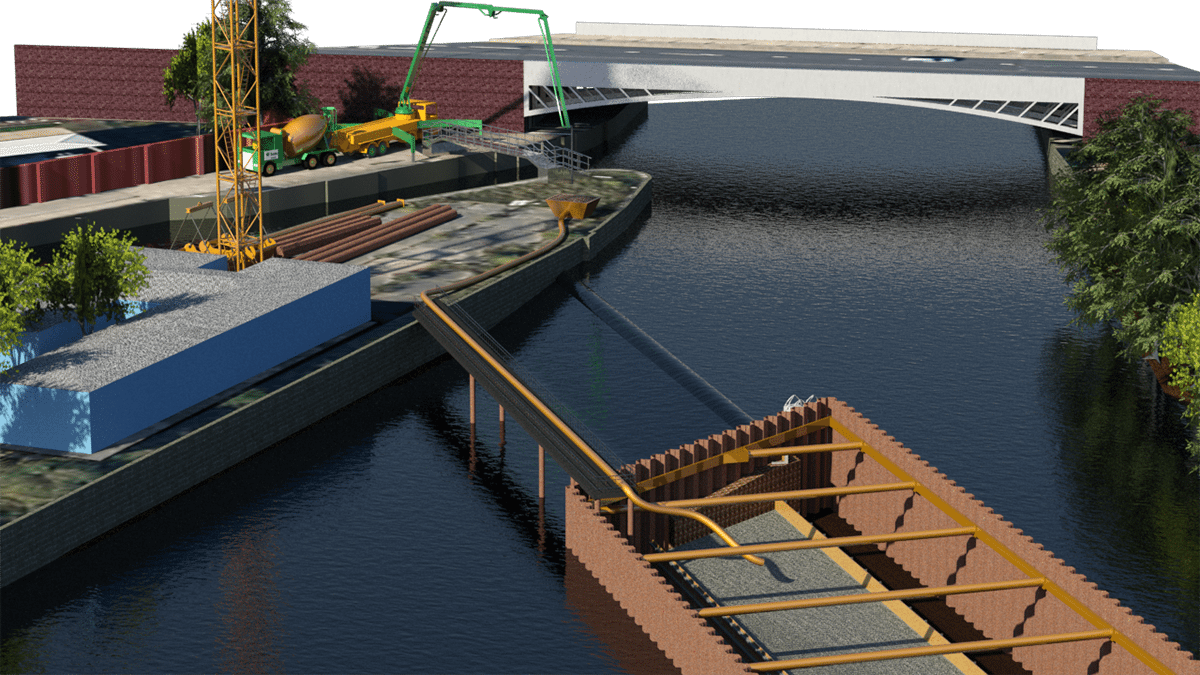Karen Alford, BIM Project Executive at the Environment Agency discusses what is essential for a client who is implementing BIM in their organisation.
The Environment Agency is mandated to deliver Building Information Modelling (BIM) and Government Soft Landings (GSL) by 2016 as part of its commitment to the Government Construction Strategy. I have been involved in this delivery since early 2012.
Most construction projects within the industry heralded as BIM exemplars so far have had the benefit of a healthy budget and have been selfcontained. Both these factors have made it easier to implement changes to commercial working practices. My task has been to implement BIM and GSL across a business with framework contracts in place and a range of projects across England valued from £250k up to a £300m programme of works. From April 2015 the Environment Agency will routinely procure BIM and GSL on our projects, and this is very significant turning point for us.
What does BIM really mean and what is the role of the client?
Across the industry there is still a common notion that BIM is just about using design software such as Revit. For a design team this may be partly true, but for the Environment Agency as a client, this is far from the case. In some extreme cases across the industry, there are reports that client misconceptions have resulted in the BIM requirement being expressed as a one liner simply saying, ‘BIM is required’.
My experience is that most of our suppliers have BIM skills and some excellent examples to share. However, supplier BIM expertise is often within pockets in the organisation and in the main, has been driven to reduce risks within their organisation. Very few suppliers have been able to work with defined client requirements.
I recently re-read the government BIM Strategy and was struck by how relevant the recommendations made by the Government BIM working group for a client implementing BIM across an organisation have turned out to be, especially in my experience of doing this in the Environment Agency. I am going to cover a couple of these.
Be very specific with supply chain providers –they will only provide what is asked for.
During the early stages of our BIM journey we spent some time investigating the activities and the interfaces between ourselves and our supply chain partners. We had candid discussions with some suppliers and it became clear how our approach unwittingly led to ambiguity about our requirements.
The introduction of an Employers Information Requirements (EIR) into the contract documents addresses this ambiguity and is essential for a client who is implementing BIM in their organisation. The EIR should focus on the corporate data and information requirements, and will be the mechanism for ensuring the information can be used efficiently and support decision making. An EIR provides clarity right from the start and gives the supplier the information they need to identify how they can adapt their business processes and project delivery model to produce reusable, and consistent outputs at an organisational level, rather than project by project. An EIR is also used by a lead supplier to commission work in its supply chain to get the requirements right at the point of creation, and avoid re-work at a later stage.
NBS, funded by InnovateUK are developing an enhanced EIR tool called a digital plan of works which will be available free of charge later this year.
To keep implementation moving in the Environment Agency, we developed a prototype. It includes all the standard information outputs exchanged during a project and details specific standards, data requirements, and where responsibilities rest. The digital plan of works is also a tool for structuring discussions about the level of visualisation and federation of data needed in any model being produced. For us, environmental modelling is as important as design modelling, and BIM allows us to bring the two together. Like all organisations moving into a BIM world we still have some work to do, particularly around identifying precise data requirements. Our work so far has created a sound framework for further progress.
Create the appropriate support infrastructure
In addition to having BIM in our commercial tools, we as the client or employer, have in place a Common Data Environment (CDE). The PAS 1192 family of standards sets out the requirements for a CDE. Most project organisations will have some form of project collaboration tool, however many will need modification to meet PAS 1192 as it requires some method for validating data at each point of exchange. Software providers in the project collaboration tool market are taking steps to modify their products.
Consideration also needs to be given to the tools asset managers may need now and in the future. There are viewing tools which will satisfy the needs of most clients, but if you plan on using integrated models for managing your assets in the future, some investment in software and training will be required. Managing data within models is a specialist skill so select your staff carefully.
Fully incorporating a BIM approach challenges traditional ways of working and processes both within the client organisation and within the suppliers. Government led BIM is about modernising the construction industry to be data driven and to utilise technology to deliver challenging cost and time efficiencies, whilst creating better assets which can be operated and maintained affordably without creating additional business risks.
Having leadership from the top supported by a team on the ground to develop tools and help project teams get to grips with the changes is essential for both client and supplier organisations.
If it was a simple as putting some BIM clauses into a contract, it wouldn’t have taken us in the Environment Agency so long to get to this point. For any client embarking on introducing BIM across their business I advise taking small manageable steps bringing your teams and suppliers along with you and see it as a longer term programme of improvement not a quick fix.
Karen Alford FCCA
BIM Project Executive
Environment Agency
karen.alford@environment-agency.gov.uk

















